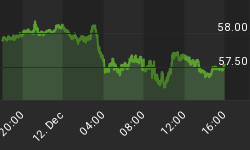As I define it, qualitative easing. If the Fed were pursuing a quantitative easing policy, its balance sheet would be growing at an unusually high rate. The Fed allegedly began to engage in quantitative easing at its mid-March FOMC meeting this year. So, let's look at the rate of growth in the Fed's balance sheet from the last Wednesday in April through the last Wednesday in November and compare this current rate of growth with rates of growth in the Fed's balance sheet for comparable periods in previous years. This is shown in Chart 1. I have arbitrarily set the end-of-April to end-of-November growth rates equal zero for 1999 and 2008 so as not to distort the scaling in the chart for other years. As you will recall, in the lead up to Y2K, the Fed ballooned its balance sheet in order to accommodate an anticipated surge in the demand for currency. The Fed's balance sheet ballooned after September 2008 in the wake of the Lehman failure.
In the most recent April-to-November period, Fed credit outstanding grew by 6.8%. This is well above the median for the 1989 through 2009 time span (with 1999 and 2008 set at zero) of 2.5%. Nevertheless, this relatively high rate of growth in the Fed's balance sheet in the 2009 interval is hardly unprecedented. In fact, in four prior years - 1990, 1992, 1993 and 2001 - the April-to-November rate of growth in the Fed's balance sheet exceeded the 2009 growth of 6.8%. And in 1991, the Fed's balance sheet grew by 6.6%, close to the 2009 growth rate.
Chart 1
Chart 2 shows the level of Federal Reserve Bank credit outstanding. After the Lehman failure in September 2008, Reserve Bank credit shot up, largely because of a surge in Fed discount-window borrowing and other special Fed credit facilities (the red line in Chart 2). After the crisis atmosphere subsided, discount-window borrowing edged lower and so did Reserve Bank credit. Then, in mid March 2009, the Fed began its program of outright purchases of Treasury coupons, GSE debt and mortgage-backed securities (the blue line in Chart 2). Notice that total Reserve Bank credit has not exactly surged as the Fed has been purchasing securities in the open market inasmuch as discount-window borrowing has continued to trend lower. The decline in discount-window borrowing is partially offsetting the increase in Reserve Bank credit emanating from the Fed's open market purchases of securities. If the Fed were pursuing a quantitative easing policy as I perceive one, the Fed's open market purchases would offset the decline in discount-window borrowing sufficiently to increase the slope of the green line (Reserve Bank credit outstanding) in Chart 2.
Chart 2
Chart 3 plots the annualized rate of growth in the nominal M2 money supply. Notice that since the Fed allegedly commenced with its quantitative easing policy in March 2009, growth in M2 slowed markedly, in fact, contracted on a 3-month basis in August and September. Is this what Milton Friedman would have characterized as a quantitative easing policy? It looks to me more like a Bank of Japan version of quantitative easing.
Chart 3
In the eight months ended November, mortgage-backed securities on the Fed's balance sheet have increased by about $616 billion; Treasury coupons by about $295 billion; and GSE securities by about $105 billion. It is interesting that since the Fed began its alleged quantitative easing policy, biased toward the purchase of mortgage-backed securities, the yield spread between the 30-year conventional mortgage and the 10-year Treasury security has narrowed to pre-crisis levels (see Chart 4). Although the yield spread between the high yield corporate and the 10-year Treasury security has also narrowed, the spread still remains above its pre-crisis levels (see Chart 5).
Chart 4
Chart 5
I would argue that since mid March of this year the Fed has engaged in a qualitative easing policy, not a quantitative easing policy. The Fed's balance sheet has not shown exceptional growth when compared with some recent years. Rather, the composition of the Fed's balance sheet has been changed in favor of mortgage-backed securities, which has coincided with a return to normal spreads of conventional mortgage rates relative to Treasury bond yields. If the Fed were pursuing a true quantitative easing policy, the M2 money supply would be accelerating in growth, not decelerating.
Paul Kasriel is the recipient of the 2006 Lawrence R. Klein Award for Blue Chip Forecasting Accuracy
















